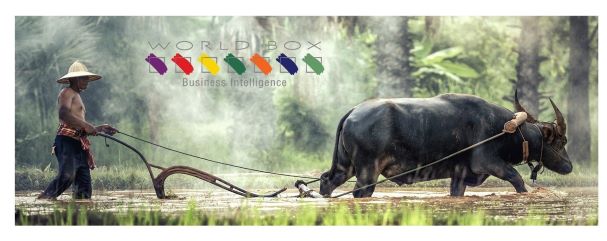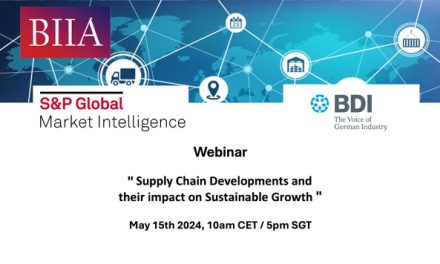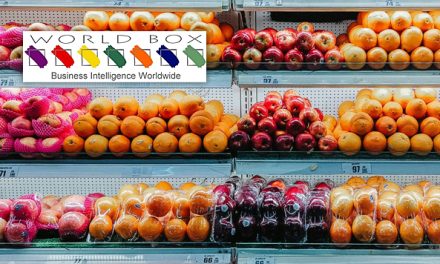Worldbox Intelligence Risk Rating – January 2023
LAOS
Overall Score 16 – Stable
Political risk: Stable 7/10
Economic risk: Stable 5/10
Commercial risk: Stable 4/10
The risk assessment of a country is made up of 3 components, being Political, Economic and Commercial. Each component is scored out of 10 with 1 being the highest risk and 10 the lowest.
Political Risk – Stable at 7
Laos has experienced relatively high levels of political stability for nearly 50 years, following the end of the Indochina conflict in 1975 and the takeover of the communist Pathet Lao movement. Laos remains a one-party state, under the control of the communist Lao People’s Revolutionary Party (LPRP). There is little opposition to the party’s rule. National Assembly elections are held every five years but are not free or fair, while protests are banned.
Since the late 1980s, the government has pursued a similar economic and political model to those of Vietnam and China. It has implemented market-based economic policies while maintaining a high degree of state control and welcoming foreign direct investment (FDI). This has proved highly successful in generating rapid economic growth. Over the decade prior to the pandemic, for example, annual growth averaged just under 8%, one of the highest levels in the world.
A party congress at the beginning of 2021 heralded modest changes at the top of the party and reaffirmed Laos’s economic strategy, including its growing reliance on China. However, a significant turnover of personnel took place at lower levels, with new technocratic officials taking over from wartime officials and party apparatchiks. The move seems to recognize criticism relating to corruption and economic mismanagement.
Economic Risk – Stable at 5
The Laotian economy had grown by nearly 8% a year over the decade leading up to the Covid pandemic. Accession into the World Trade Organization in 2013 and the creation of the ASEAN Economic Community (AEC) in 2015 precipitated significant reforms designed to improve the business and investment environment. Rapid economic growth in neighbouring countries such as China, Vietnam and Thailand has also boosted trade and FDI.
China, Thailand and Vietnam are the country’s main trade and investment partners. Trade with China is growing particularly rapidly, aided by massive Chinese FDI and the China–Laos Railway project, which travels across Laos from the Chinese border to the capital Vientiane. Three Chinese-backed highway projects are also underway as part of China’s Belt and Road Initiative.
The railway project should have a significant impact on growth by encouraging FDI and attracting increasing tourism from China. It should also boost exports. The cost of shipments from Vientiane to Kunming, in the southern Chinese province of Yunnan, will be cut by 40–50%, along with a 20–40% cost reduction on domestic routes, according to a World Bank report. Exports from Laos to China were worth US$1.7 billion in 2019 and could expand by about 20% per year, according to the UN.
However, there are growing concerns about Laos foreign debt. The country’s official debts have grown rapidly in recent years and now equal 88% of GDP, with 60% owed by the public sector and the remainder comprising public–private partnerships such as the Boten-Vientiane railway. The risk associated with this debt, largely denominated in dollars, increases during periods when the kip is depreciating, as is the case in 2022.
Figures from the government and Fitch reveal that Laos has to make foreign-debt repayments of an average of $1.3 billion per year until 2026. That is around half of the government’s annual revenue, and the depreciating kip is undermining the country’s ability to make those debt repayments, since the foreign debt is priced in foreign currencies, such as the US dollar, the Thai baht, the Chinese yuan, the Japanese yen, the Korean won and the euro.
Half of the external debt is owed to China, following its numerous investments in the country, including the US$5.9bn loan for the China–Laos high-speed train line and US$17.8bn for three highways, as well as loans for hydroelectricity projects. However, Toshiro Nishizawa, a professor at The University of Tokyo’s Graduate School of Public Policy and fiscal advisor to the Laos government believes China will not allow Laos to default. Nishizawa wrote in August that China “does not want to become a creditor burdened with non-performing assets, nor does it want to look like an unreliable lender to developing Asia Pacific and indeed African nations”.
He added that:
“The Lao government could avoid default by seeking China’s support for deferrals and liquidity provision. On top of bilateral debt deferrals, China is inclined to accept equity investment, as seen in the power grid shareholding deal. (A reference to the March 2022 acquisition of a majority stake in Électricité du Laos for 25 years by China Southern Power Grid) This would help Laos secure foreign exchange for debt repayments and foreign capital for infrastructure development.”
Commercial Risk – Stable at 4
The economic crisis is having a significant impact on the ability of businesses to pay their debt. One report in mid-June 2022 from Radio Free Asia suggested that half of all SMEs are facing severe difficulties.
Laos was already one of the most difficult countries in the Asia–Pacific region in which to do business, according to the World Bank, which ranked it 154th among 190 in its 2020 Ease of Doing Business guide, ahead of only Myanmar in Southeast Asia.
The World Bank says the low ranking reflects the country’s complex and opaque business environment, with barriers to regional trade and integration that limit its attractiveness as an investment destination. The Bank cites investors’ complaints about the high costs of doing business and the absence of a transparent, dynamic and streamlined business environment. Overall, the economy remains inward-oriented (only 2.9% of firms export directly), with little investment or innovation among local firms.
Corruption is another significant challenge. Laos ranks 134th out of 180 countries in Transparency International’s (TI) 2021 Corruption Perceptions Index. Laos is considered to be the third most corrupt country in the ASEAN region, behind Myanmar and Cambodia.
The Laos Corruption Report by GAN also declares that corruption is a high risk for companies operating in Laos and deters foreign investment. GAN says that political patronage pervades all business sectors, and a culture of corruption has been perpetuated by senior LPRP leaders and by foreign investors willing to buy political support and pay off officials. It adds that companies are likely to encounter petty bribery when trading across borders, paying taxes or acquiring public services.
In terms of the rule of law, GAN says that a weak and inefficient judiciary impedes the proper enforcement of anti-corruption laws and officials are rarely prosecuted. It adds that bribery is widespread in both civil and commercial cases, and the legal system is subject to political interference.
January Bulletin
Political Risk – Stable at 7
The economic crisis facing Laos in mid-2202 could have repercussions in the political environment. Public anger is reportedly mounting with chatter on social media about possible street protests, although none have materialized so far. Surging food and fuel prices are creating severe hardship for many Laotians with reports of staples such as noodles and eggs doubling in price. The police are likely to deal severely with any that do take place.
Prime Minister Phankham Viphavanh, who assumed office in March 2021, has reacted to growing public anger at perceived government incompetence by demoting the central bank governor and the minister in charge of industry and commerce. Two technocrats have taken their place. Phankham’s position should be secure: it would be highly unusual to replace a premier before their five-year term expires. However, there are suggestions he could be replaced at the half-way point in 2023 if the economic background does not improve.
Economic Risk – Stable at 5
In September, the Lao Academy of Social and Economic Science lowered its forecast of economic growth to 3% for 2022, from 4% projected earlier. That reflected a slower expansion in sectors relating to consumption, export, and private and state investment. The value of foreign direct investment fell to US$280m over the first six months of 2022, a drop of 51% compared to the same period of 2021, while state investment dropped by 4.1%, according to the academy, due to the costs of higher debt service repayments and the economic challenges facing the country.
These include inflation, which jumped to an annual pace of 36.75% in October. The rise in the costs of basics is placing particularly pressure on Laotians who are already amongst the poorest people in Southeast Asia. The Lao Statistics Bureau website reported that in October the price of food and non-alcoholic beverages surged by 38.8% year on year, driven by the rising price of rice and other daily food items such as pork, poultry, fish, seafood, eggs, vegetable oil, fruit, and vegetables.
In August 2022, Fitch Ratings downgraded Laos’ Long-Term Foreign-Currency Issuer Default Rating to ‘CCC-‘ from ‘CCC’. Fitch said the downgrade reflected a further rise in external liquidity risks, driven most recently by higher commodity prices and tightening global financing conditions. Fitch cited Laos’ “challenging” external debt repayment profile amid narrow financing options, surging inflation, currency depreciation and low foreign-exchange reserves. It added that:
“The Lao government has prioritised repayment of private debt obligations in recent years, but we believe risks are growing due to these external liquidity strains.”
A loss of investor confidence that has sparked a sharp decline in the value of the kip has added to Laos’ woes, and undermined its ability to repay dollar denominated debt, and pay for imports. The Lao kip fell in value by 37.4% against the US dollar and 32.9% against the Thai baht in the official market during the first eight months of 2022, according to an updated report from Asian Development Bank (ADB) website. With oil prices also rising sharply as a result of the Ukraine war, importers are struggling to buy fuel, which will damage economic growth prospects. The lack of fuel, for example, means new rice cannot be sown in several parts of the country.
Possible measures to address the crisis include a ban on holding foreign currencies in order to avert the liquidity crisis. The government is also said to have plans to issue high-yield bonds to reduce the amount of cash in circulation.
The full re-opening of the country to foreign tourists in June 2022 has provided a welcome boost to the economy. The country received 4.79 million tourists and earned US$935m from tourism in 2019, making the sector a vital source of foreign-exchange earnings. International visitor numbers fell to under 900,000 in 2020. The opening of the China–Laos high-speed train line in late 2021 should also boost the economy.
In 2022, the government announced plans to open a new rail link from Laos to the port of Vung Ang in central Vietnam with construction starting as early as November 2022. The scheme is part of the government’s ambitions to turn Laos into a regional logistics hub by forging rail links with China, Vietnam and Thailand. In 2021, the construction of the Vientiane Logistics Park – built at a cost of over US$700m – was completed the day after the China-Laos high-speed railway – the first of its kind in Southeast Asia was launched. There are plans to build another logistics side across the Mekong from Vientiane in Thailand. An upgraded railway will link this facility to the Laem Chabang, Thailand’s biggest trading port.
The government believes transforming Vientiane into a node connecting ASEAN and the Chinese market by both road and rail will enhance the country’s trade competitiveness and stimulate investment.
Commercial Risk – Stable 4
Counterparty risk, already difficult to assess (corporate financial information is rarely available and, when available, is usually unreliable), has almost certainly risen during the pandemic. The legal system continues to make debt collection very unpredictable.
An official report into corruption published in April 2022 has lost hundreds of millions of dollars to endemic corruption. The Lao State Inspection Authority said widespread graft had beset government-sponsored investment and development projects leading to a loss of US$767 million since 2016. A report by the Union of Catholic Asian News added, however, that locals are unimpressed by such government-sponsored reports, considering them to be part of an official whitewashing of rampant corruption. It added that numerous citizens who have voiced their concerns about corruption and malfeasance by communist officials have been arrested and tried in recent years.
Latest economic data
About Worldbox Business Intelligence
An independent service, Worldbox Business Intelligence provides online company credit reports, company profiles, company ownership and management reports, legal status and history details, as well as financial and other business information on more than 50 million companies worldwide, covering all emerging and major markets.
Worldbox was founded in the 1980s, with the vision to become a global business provider. Its ability to deliver data in multiple languages in a standard format has strengthened its brand.
Copyright (C) 2022 Worldbox Business Intelligence. All rights reserved.
Our mailing address is:
Worldbox Business Intelligence
Breitackerstrasse 1
Zollikon
Zurich 8702
Switzerland





























